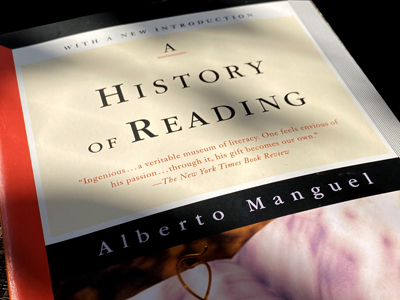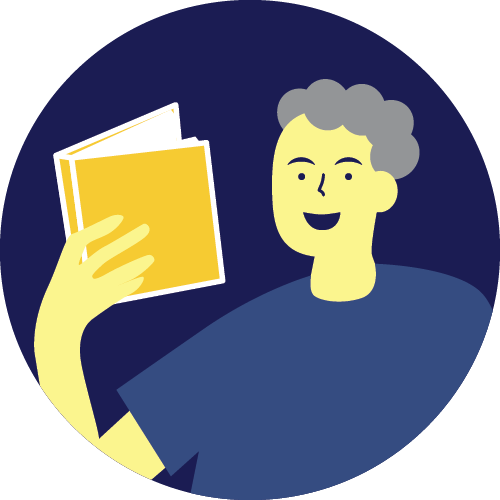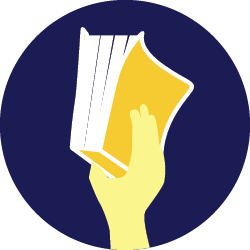
TELLING STORIES
A Brief History of Reading
Image source: Ed Robertson/Unsplash
At one magical instant in your early childhood, the page of a book - that string of confused, alien ciphers - shivered into meaning.
Words spoke to you, gave up their secrets; at that moment, whole universes opened. You became, irrevocably, a reader.
- From A History of Reading by Alberto Manguel
Reading History Highlights

Image source: Anne Zbitnew
Published in 1997, Alberto Manguel's A History of Reading explores the history of books and reading like a conversation between words and the reader. He writes about how we read: in our rooms, lying down and sitting up, silently and aloud, alone and in groups, and explores what it meant to be a reader of early tablets or scrolls right up to CD-ROMs (remember, this was written in 1997!). Manguel details how libraries came to be, how books have changed size and shape, and the history of banning and burning books.
In the 2017 Massey Lectures, Manguel asks "How do stories help us perceive ourselves and others?" and "How can stories lend a whole society an identity...?" while exploring how books and stories bind us together.

READING as Performance
The earliest written texts were meant to be read out loud. In 220 BCE, the characters were written in a continuous stream and the reader had to create words as they read aloud. Punctuation was first used at this time and was used erratically well into the Middle Ages. Most people were still illiterate and the only way to experience was through public readings, which took place in royal courts and monasteries. From the Roman times to the 19th century, reading aloud from a book was dinnertime entertainment.
In the 5th century BCE, Herodotus read his latest works at the Olympics. Author readings were a social convention in Rome as early as 100 CE. Popular authors embraced the tradition of planned readings from Charles Dickens to Jean Jacques Rousseau. Works by Rousseau had been banned by the pre-revolutionary French authorities so readings at friend's houses was the only way to have an audience.
In Europe, well into the 19th century, women were encouraged to acquire minimal education but being read to by family and friends was considered acceptable as entertainment and a source of knowledge. Once primary education became available, accessible, and acceptable, younger women would read to their elders.

READING Silently
Early texts were meant to be heard, not read silently. The first regulations requiring scholars to work in silence date from the 9th century. Before that, studying was done by reading aloud. Reading silently made reading a private activity, which became normalized with books made more accessible with the simplification of language, the use of punctuation, and the inclusion of images and illustrations and due to increased literacy in the public.

READING as Rebellion
The power of words has been recognized since ancient times and it comes as no surprise that authority figures throughout history have tried to oppress people by denying access to literacy and reading. For many marginalized and devalued groups, reading has been a courageous act of rebellion and resistance. Enslaved people were denied access to reading for centuries. Many managed to learn to read by using hidden methods of learning. Literature written by people who taught themselves to read and write became an important way to tell stories that countered slavery and oppression.
Dictators and totalitarian rulers recognized the importance of ignorance in keeping people subservient and have banned books that go against their version of reality. In 1559, the Roman Catholic Church began to maintain an Index of Forbidden Books and in Nazi Germany, the government made a spectacle of book burning. On May 10, 1933, Nazi-dominated student groups carried out public burnings of books in 34 university towns and cities they claimed were "un-German." Important works by prominent Jewish, liberal, and leftist writers ended up in the bonfires. The book burnings stood as a powerful symbol of Nazi intolerance and censorship (Patra, 2021).
